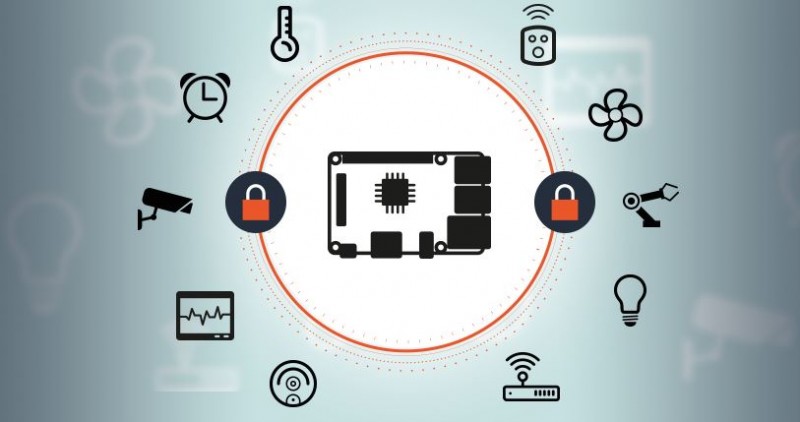
The Internet of Things (IoT) has revolutionized the way we interact with technology, enabling seamless connectivity and automation. IoT devices are embedded with sensors, software, and connectivity features that allow them to exchange data and perform various functions. From smart home appliances to industrial systems, IoT has found its applications across diverse sectors. However, the widespread adoption of IoT devices has also brought along numerous cybersecurity challenges, as these devices are vulnerable to potential threats and attacks.
Understanding the Internet of Things (IoT)
Definition of IoT
The Internet of Things refers to the network of physical objects, devices, vehicles, and other items embedded with software, sensors, and connectivity capabilities that enable them to collect and exchange data over the internet.
The Growth of IoT Devices
The IoT ecosystem has witnessed explosive growth in recent years, with an ever-increasing number of devices being connected to the internet. This growth has also brought attention to the security risks associated with IoT devices.
Importance of Cybersecurity for IoT Devices
Rising Threat Landscape
As the number of IoT devices continues to rise, so does the potential for cyberattacks. Hackers and malicious actors are constantly looking for vulnerabilities to exploit, making robust cybersecurity measures essential.
Potential Consequences of IoT Breaches
A breach of IoT devices can have severe consequences, ranging from compromising personal data to disrupting critical infrastructure. It is crucial to address these vulnerabilities effectively.
Common Vulnerabilities in IoT Devices
Weak Authentication
Many IoT devices lack strong authentication mechanisms, making them susceptible to unauthorized access.
Lack of Encryption
The absence of encryption exposes data transmitted by IoT devices, allowing potential attackers to intercept and manipulate sensitive information.
Inadequate Firmware Updates
Manufacturers often neglect to provide timely firmware updates, leaving devices vulnerable to known exploits.
Default Credentials
Some IoT devices come with default login credentials that are easily discoverable, making them an easy target for attackers.
Physical Tampering
Physical access to IoT devices can result in tampering and unauthorized control, necessitating enhanced physical security measures.
Challenges in Securing IoT Devices
Diverse Ecosystem
The IoT landscape encompasses various devices from different manufacturers, making it challenging to implement uniform security measures.
Resource Constraints
Many IoT devices operate with limited resources, making it difficult to integrate robust security features.
Interoperability Issues
Interoperability challenges can lead to security gaps as devices from different vendors may not communicate securely with one another.
Best Practices for IoT Device Security
Strong Authentication Mechanisms
Implementing multi-factor authentication and secure login protocols can bolster the security of IoT devices.
Robust Encryption Standards
End-to-end encryption ensures that data exchanged between IoT devices remains confidential and secure.
Regular Firmware Updates
Manufacturers must provide regular updates to address security vulnerabilities and improve device performance.
Eliminating Default Credentials
Requiring users to set unique login credentials upon device setup can prevent unauthorized access.
Implementing Physical Security Measures
Physically securing IoT devices can prevent tampering and unauthorized access.
The Role of Manufacturers and Developers
Secure Design Practices
Manufacturers and developers must prioritize security during the design and development of IoT devices.
Security Audits and Testing
Regular security audits and testing help identify vulnerabilities and ensure ongoing device security.
Responsible Vulnerability Disclosure
Establishing channels for responsible disclosure encourages users and security researchers to report vulnerabilities without fear of legal repercussions.
Government Regulations and Industry Standards
Efforts to Regulate IoT Security
Governments around the world are enacting regulations to ensure the security of IoT devices and protect consumers.
Adherence to Cybersecurity Standards
Following industry standards and best practices can significantly enhance IoT device security.
Cybersecurity Awareness for Users
Education and Training
Educating users about IoT security risks and best practices can help them make informed decisions.
Secure Configuration and Settings
Users should configure their IoT devices securely and keep up with security updates.
Monitoring IoT Devices
Regularly monitoring device activity can help detect suspicious behavior or potential breaches.
Future Trends in IoT Security
AI and Machine Learning Integration
AI-driven security solutions can dynamically adapt to emerging threats and enhance IoT device security.
Blockchain for Enhanced Security
Blockchain technology holds promise for enhancing the integrity and transparency of data exchanged between IoT devices.
Advancements in IoT Security Solutions
Continuous advancements in security technologies will lead to more sophisticated and robust protection for IoT devices.
As the Internet of Things continues to expand its influence across various industries, addressing cybersecurity vulnerabilities becomes paramount. By adopting best practices, encouraging responsible disclosure, and adhering to industry standards, manufacturers, users, and governments can work together to secure the IoT ecosystem effectively.
The Rise of Smart Cities: Urban Planning and IoT Integration
TikTok Debuts Music Streaming Service in Australia, Mexico, and Singapore